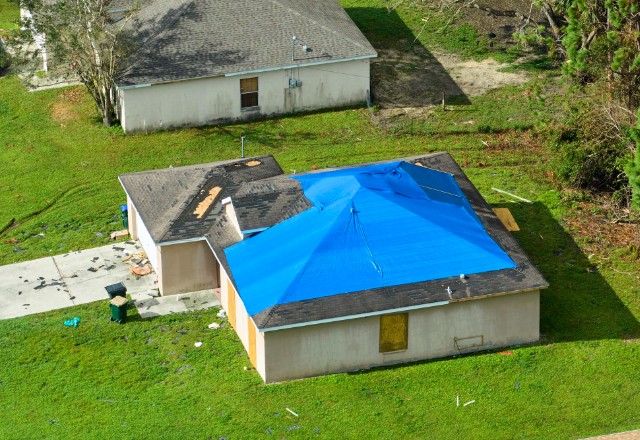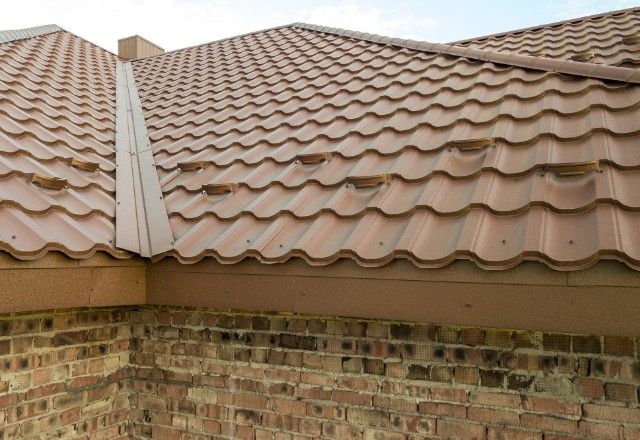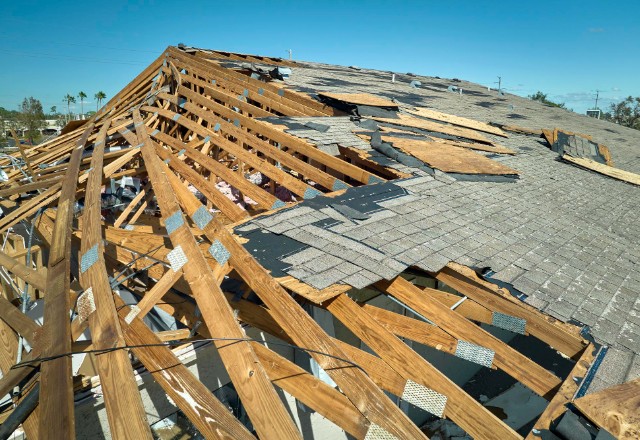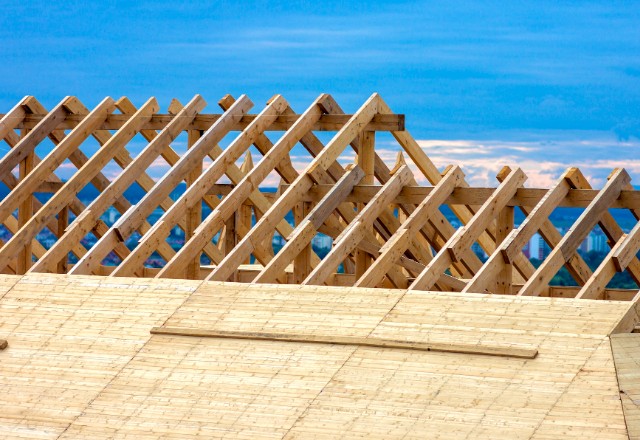As a homeowner, one of the most important questions you may find yourself asking is, “How often does a roof need to be replaced?” The answer to this question is not always straightforward, as several factors can impact the lifespan of your roof. In this comprehensive guide, we’ll explore the various elements that influence roof longevity and provide you with valuable insights to help you determine when it’s time for a roof replacement.
Factors That Affect Roof Lifespan
How often does a roof need to be replaced? The answer depends on a variety of factors that can impact your roof’s lifespan. Let’s take a closer look at these key elements:
1. Roofing Material
The type of roofing material you choose plays a significant role in determining how often your roof needs to be replaced. Some common roofing materials and their average lifespans include:
Roofing Material | Replacement Frequency |
Asphalt Shingles | Every 15-30 years |
Metal Roofing | Every 40-70 years |
Tile Roofing | Every 50-100 years |
Wood Shingles | Every 20-40 years |
Slate Roofing | Every 75-200 years |
As you can see, the lifespan of your roof can vary significantly depending on the material you choose. It’s essential to consider not only the initial cost of the material but also the long-term cost of replacement when making your decision.
2. Climate and Weather Conditions
The climate and weather conditions in your area can have a significant impact on how often your roof needs to be replaced. Exposure to harsh elements such as intense sunlight, heavy rainfall, high winds, and extreme temperatures can accelerate the aging process of your roofing materials.
For example, if you live in an area prone to severe storms, your roof may be more susceptible to damage from high winds and hail, leading to a need for more frequent replacements. Similarly, if you live in a region with intense UV radiation, your roofing materials may deteriorate more quickly, requiring replacement sooner than in more temperate climates.
3. Installation Quality
Proper installation is crucial for maximizing the lifespan of your roof and minimizing the need for frequent replacements. A poorly installed roof is more susceptible to leaks, damage, and premature wear, which can significantly shorten its lifespan.
When selecting a roofing contractor, it’s essential to choose a reputable, experienced professional who follows industry standards and best practices. A quality installation can help ensure that your roof performs optimally and lasts as long as possible, reducing the frequency with which you need to replace it.
4. Maintenance and Repairs
Regular maintenance and timely repairs can play a significant role in extending the life of your roof and determining how often it needs to be replaced. Neglecting minor issues, such as small leaks or damaged shingles, can lead to more extensive damage over time, ultimately shortening the lifespan of your roofing system.
By implementing a regular maintenance schedule and addressing repairs promptly, you can help prevent minor issues from escalating into major problems, thereby minimizing the need for frequent replacements. This proactive approach can save you money in the long run and keep your roof in top condition for years to come.

Signs That Your Roof Needs Replacement
Knowing the signs that indicate your roof needs replacement is essential for proactive maintenance and preventing costly water damage to your home. Some key indicators that it may be time to replace your roof include:
- Age of the roof: If your roof is approaching or has surpassed its expected lifespan based on the roofing material used, it may be time to consider a replacement. Refer to the table above for average lifespans of common roofing materials.
- Curling or missing shingles: Shingles that are curling, cracking, or missing altogether can compromise the integrity of your roof and leave your home vulnerable to leaks and water damage. If you notice extensive damage to your shingles, it may be time for a replacement.
- Granules in the gutters: As asphalt shingles age, they begin to lose their protective granules, which often end up in your gutters. If you notice an excessive accumulation of granules in your gutters, it’s a sign that your shingles are deteriorating and may need to be replaced.
- Daylight through the roof boards: If you can see daylight filtering through your roof boards when you’re in your attic, it’s a clear sign that your roof has significant damage and needs immediate attention. This issue can lead to water damage, mold growth, and other serious problems if left unaddressed.
- Sagging roof: A sagging roof is a sign of structural damage and requires prompt replacement to prevent further issues and ensure the safety of your home. Sagging can be caused by a variety of factors, including water damage, inadequate ventilation, and improper installation.
- Leaks or water damage: If you notice leaks or water stains on your ceilings or walls, it’s a clear indication that your roof may have reached the end of its lifespan and requires replacement. Water damage can lead to mold growth, structural issues, and other costly problems if not addressed promptly.
If you notice any of these signs, it’s crucial to have your roof inspected by a professional roofing contractor to determine the extent of the damage and whether repair or replacement is the best course of action.
Benefits of Timely Roof Replacement
Replacing your roof when it shows signs of aging or damage offers several key benefits:
- Improved energy efficiency: A new roof, particularly one with energy-efficient materials and proper insulation, can help regulate your home’s temperature, reducing your energy bills and keeping your home more comfortable year-round.
- Enhanced curb appeal: A well-maintained, attractive roof can significantly boost your home’s curb appeal and overall value. If you’re considering selling your home in the future, a new roof can be a major selling point and help you command a higher price.
- Prevention of structural damage: Addressing roof issues promptly can prevent more extensive and costly damage to your home’s structure, such as water damage to walls, ceilings, and foundations. By replacing your roof when needed, you can protect your home’s integrity and avoid more expensive repairs down the line.
- Peace of mind: Knowing your home is protected by a reliable, sturdy roof can provide invaluable peace of mind. You can rest easy knowing that your family and belongings are safe from the elements and that your home is well-prepared to withstand whatever Mother Nature throws its way.

Factors to Consider When Replacing Your Roof
When it’s time to replace your roof, there are several factors to keep in mind to ensure you make the best decision for your home and budget:
1. Choosing the Right Roofing Material
There are a variety of roofing materials available, each with its own advantages, disadvantages, and price points. When selecting a roofing material, consider the following factors:
- Climate: Choose a material that can withstand the specific weather conditions in your area, such as high winds, heavy rainfall, or extreme temperatures.
- Aesthetics: Consider the style and color of your home when choosing a roofing material, as well as any neighborhood or HOA guidelines that may impact your decision.
- Budget: Roofing materials vary significantly in price, so it’s important to choose a material that fits your budget while still providing the necessary protection and durability.
- Lifespan: Consider the expected lifespan of each material and how often you’re willing to replace your roof when making your decision.
2. Selecting a Reputable Roofing Contractor
Choosing the right roofing contractor is just as important as selecting the right roofing material. A reputable, experienced contractor can ensure that your roof is installed correctly and performs optimally for years to come. When selecting a contractor, look for the following:
- Licensing and insurance: Make sure your contractor is licensed to work in your area and carries adequate liability insurance and workers’ compensation coverage.
- Experience: Choose a contractor with a proven track record of successfully completing roofing projects similar to yours.
- References and reviews: Ask for references from past clients and read online reviews to get a sense of the contractor’s quality of work and customer service.
- Warranty: Look for a contractor who offers a warranty on their workmanship, as well as a manufacturer’s warranty on the roofing materials used.
3. Cost and Financing Options
The cost of a roof replacement can vary widely depending on factors such as the size of your home, the roofing material chosen, and the complexity of the installation. On average, homeowners can expect to pay between $5,000 and $15,000 for a full roof replacement.
If you’re concerned about the upfront cost of a roof replacement, there are several financing options available:
- Insurance coverage: If your roof was damaged by a covered event, such as a severe storm, your homeowner’s insurance may cover some or all of the cost of replacement.
- Payment plans: Many roofing contractors offer payment plans that allow you to spread the cost of your roof replacement over time, making it more manageable for your budget.
- Home equity loans or lines of credit: If you have equity in your home, you may be able to use it to finance your roof replacement through a home equity loan or line of credit.
4. Warranty and Guarantees
When investing in a new roof, it’s essential to understand the warranties and guarantees provided by your roofing contractor and the manufacturer of the roofing materials. There are two main types of warranties to look for:
- Manufacturer’s warranty: This warranty covers defects in the roofing materials themselves and typically ranges from 20 to 50 years, depending on the material.
- Workmanship warranty: This warranty is provided by your roofing contractor and covers issues related to the installation of your roof. Workmanship warranties typically range from 1 to 10 years.
Be sure to carefully review the terms and conditions of any warranties or guarantees before signing a contract, and don’t hesitate to ask your contractor for clarification if needed.

Maintenance Tips to Extend Your Roof’s Lifespan
While replacing your roof when needed is essential, there are also several maintenance tips you can follow to help extend its lifespan and minimize the need for frequent replacements:
1. Schedule Regular Inspections
Having your roof inspected by a professional at least once a year can help identify and address any potential issues early on before they escalate into major problems. During an inspection, a roofing contractor will look for signs of damage, such as missing or cracked shingles, leaks, or sagging, and recommend any necessary repairs.
2. Clean Gutters and Downspouts
Keeping your gutters and downspouts clear of debris is essential for proper water drainage and preventing damage to your roof and foundation. Clogged gutters can cause water to back up and seep under your shingles, leading to leaks and water damage.
3. Trim Overhanging Branches
Tree branches that hang over your roof can cause damage in several ways. They can scratch or puncture your shingles, allowing water to seep in and cause leaks. Falling branches can also cause more significant damage during storms or high winds. Trimming back overhanging branches can help protect your roof and extend its lifespan.
4. Ensure Proper Ventilation and Insulation
Adequate ventilation and insulation are essential for regulating your home’s temperature and moisture levels, which can have a significant impact on your roof’s longevity. Poor ventilation can lead to heat and moisture buildup in your attic, causing your shingles to deteriorate more quickly and increasing the risk of mold and mildew growth.
5. Address Repairs Promptly
If you notice any signs of damage or leaks, it’s essential to have them addressed by a professional as soon as possible. Ignoring minor issues can lead to more extensive and costly damage down the line, ultimately shortening the lifespan of your roof.
When to Consider Roof Repair Instead of Replacement
While replacing your roof is necessary when it reaches the end of its lifespan or has extensive damage, there are some situations where a repair may be more appropriate:
- Minor damage: If your roof has only minor damage, such as a few missing shingles or a small leak, a repair may be sufficient to address the issue and extend the life of your roof.
- Localized issues: If the damage to your roof is localized to a specific area, such as around a chimney or skylight, a repair may be able to resolve the problem without requiring a full replacement.
- Relatively new roof: If your roof is relatively new and has not yet reached the end of its expected lifespan, a repair may be more cost-effective than a full replacement.
However, if your roof is approaching the end of its lifespan or has widespread damage, a complete replacement may be more cost-effective and provide better long-term protection for your home.

Conclusion
In conclusion, how often a roof needs to be replaced depends on various factors, including the roofing material, climate and weather conditions, installation quality, and maintenance. By understanding these factors and knowing the signs that indicate your roof needs replacement, you can make informed decisions about your home’s roofing needs.
Remember to work with a reputable roofing contractor, follow a regular maintenance schedule, and address any issues promptly to maximize the lifespan of your roof and protect your home. If you have concerns about your roof’s condition or are unsure whether repair or replacement is the best option, consult a professional roofing contractor for expert advice and guidance.
By taking proactive steps to maintain and replace your roof when needed, you can ensure that your home remains protected and comfortable for years to come, while also minimizing the need for frequent and costly replacements.



 509-201-4190
509-201-4190
